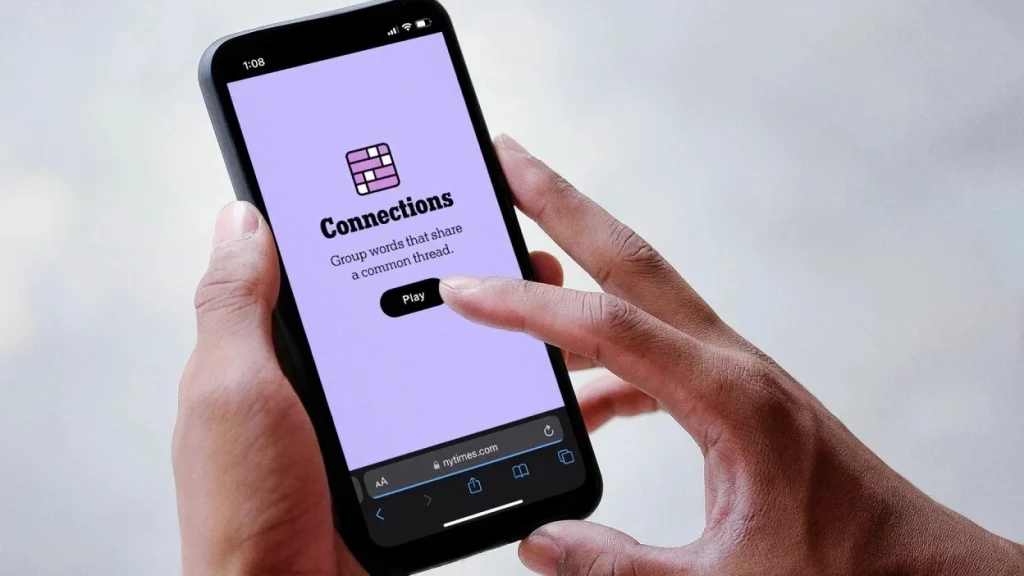
The New York Times’ (NYT) foray into the world of daily word puzzles began with the wildly successful Wordle. Now, with Connections, launched in beta in June 2023, the NYT is offering a new challenge that has some players scratching their heads. While both games involve wordplay and logic, Connections presents a distinct set of frustrations that threaten to mar the experience for some.
Connections: A Different Kind of Wordplay
Unlike Wordle, which focuses on guessing a single five-letter word within six tries, Connections presents players with a grid of 16 words. The objective is to categorize these words into four groups of four, each sharing a hidden thematic connection. Players have four attempts to correctly assign each word, with success indicated by a color change (typically green).
This shift in gameplay introduces a layer of complexity absent in Wordle. Connections demands not just vocabulary knowledge but also the ability to identify subtle thematic threads that might link seemingly disparate words.
Read Also: Should You Buy YouTube Subscribers and Likes?
A Frustrating Experience for Some
While the challenge is lauded by some enthusiasts, others have expressed dissatisfaction with the game’s design. Here are some key concerns:
- Obscure Connections: Complaints abound regarding the occasional appearance of connections that feel arbitrary or overly specific. For instance, some puzzles might group words based on uncommon cultural references or niche scientific terminology [3]. This can leave players feeling frustrated and alienated.
- Trial and Error vs. Logic: The limited number of attempts (four) can often lead to a guessing game rather than a process of logical deduction. Players might resort to strategically placing words hoping to stumble upon the correct categories [2]. This undermines the sense of satisfaction that comes from solving the puzzle through logical reasoning.
- Lack of Feedback: Unlike Wordle, which provides immediate feedback after each guess, Connections offers minimal guidance. Players are left to decipher the connections on their own, which can be discouraging, especially for newcomers.
Is Connections Here to Stay?
Despite these criticisms, Connections boasts a dedicated player base. The game’s daily format fosters a sense of community, and the intellectual challenge appeals to those who enjoy a more intricate wordplay experience [2].
The NYT has remained tight-lipped regarding potential changes to the game’s mechanics. However, with the ever-growing popularity of word puzzles, it’s likely that the developers are closely monitoring player feedback and may introduce adjustments to address the concerns raised.
Looking Ahead: A More Balanced Challenge?
The future of Connections hinges on its ability to strike a balance between difficulty and accessibility. Here are some potential improvements:
- Difficulty Levels: Introducing difficulty levels could cater to players with varying levels of experience. Easier puzzles could offer more straightforward connections, while harder ones could retain the current level of complexity.
- Hints and Explanations: Providing optional hints or revealing the connections after solving the puzzle could enhance the learning experience, especially for players encountering unfamiliar themes.
Final Words
The New York Times Connections Game offers a unique twist on the word puzzle genre. While its challenging nature appeals to some, the lack of clear feedback and occasional obscure connections leave others feeling frustrated. Whether Connections can carve out a lasting niche alongside its predecessor, Wordle, remains to be seen. The NYT’s willingness to address player feedback and potentially introduce tweaks to the game’s design will be crucial in determining its long-term success.
Sources:
- Connections Game – Play Connections NYT: https://connectionsgame.com/
- The New York Times Connections: Video game Connections: https://en.wikipedia.org/wiki/The_New_York_Times_Connections
- NYT Connections: hints and answers for Friday, April 5 | Digital Trends
